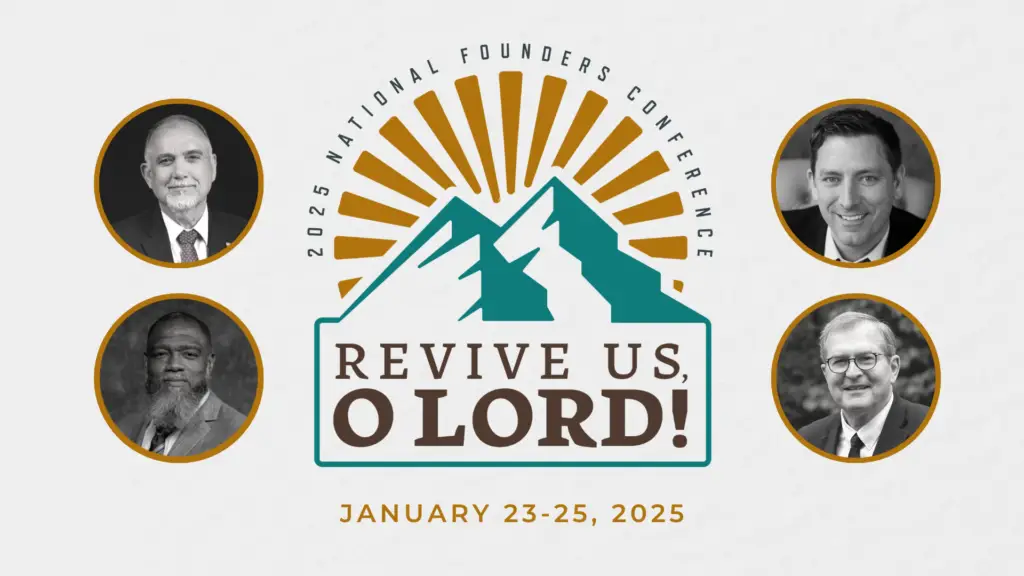This article is part 10 in a series by Tom Nettles on Remembering Jesus Christ. (Part 1, Part 2, Part 3, Part 4, Part 5, Part 6, Part 7, Part 8, Part 9 ).
Before John gives a narrative of his evidence, the signs and sayings that should produce belief, He gives a dense and powerful statement of the theological conclusion. We know from the beginning what he is driving toward.
“In the beginning was the Word” (John 1:1). John affirms that the living Word of God, that is, the Son of God, was there and the active agent of the events that began in Genesis 1:1: “In the beginning.” Genesis goes on to say, “God created.” John’s assumption of the language of the Genesis narrative indicates that this Word was the God who created. This is reiterated in verse 3 when John writes with economy and force, “All things through him” (as the intermediate but co-equal agent carrying out the full intention of the Father) “came into being, and without him came into being not even one thing” (3). Again, this is stated in verse 10, “The entire created order with all of its symmetry, inter-relations, and reciprocal dependencies and attractions [cosmos] through Him, as the intermediate and effecting agent, came into being.”
The verb “was,” the imperfect of eimi, is used three times in verse 1 and again in verse 2. It implies absolute continual existence. After implying that the Word is eternal and is the God who created, John says the “Word was with God.” This is a strong word of association, “face to face with God” (1:1), with the definite article, “the God.” This identifies another personal being who also is eternally divine, even as the Word is. Immediately John continues with a statement about the Word, “the Word was God.” The Word is not that God identified specifically in the previous phrase, but is himself, in his essence, a person of the same nature as “the God” that he was, is, and will continue to be “with.” A. T. Robertson says that this phrase “presents a plane of equality and intimacy.” When the same phrase appears in 1 John 1:2, he calls it “the accusative of intimate fellowship.” Later this relation is verbalized as “in the bosom of the Father” (18).
Verse 2 reiterates the assertion of verse 1 in short-hand style. “He,” –this one that has just been called God– “was,”—again the imperfect of eimi meaning having continuing eternal existence without a beginning—“in the beginning”—when everything that has a beginning began—‘with God”—face to face in essential union with a distinct divine person whom we learn is the Father. The perfect bond of intimate communion between Son and Father is the Holy Spirit (John 15:26; 16:14, 15).
Verses 4, 5, 9 engage the idea of the Word being the source, not only of physical created light, but of the inextinguishable rationality and inner-witness in men called the “image of God” (Genesis 1:26, 27). As Jesus is the uncreated image of God (Colossians 1:15), even the “brightness of his glory and the express image of his person” (Hebrews 1:3), so humanity by created constitution bears God’s image. The Son has created us as reflections of his own being. “In Him was life, and the life was the light of men” (4). As the Father by eternal generation has given to the Son to have “life in himself” (John 5:26), so the Son has given us by creation life and light that is dependent upon him. The light is the rational morality and heart-law of humanity. The Word eternally exists as the true light (9), and every person that is conceived (that comes into being in this world), receives at that point the divine image as communicated by the eternal Word, the eternal radiance of the divine glory.
Sin, however, has darkened our perceptions. Bearers of the Light walk about in darkness and thus, though the light-giver was in the world, “the world did not know him” (10). Even his covenant people who had the fathers and the covenants and the written law did not receive him (11). Revelation of truth diminishes cognitive darkness but does not overcome the spiritual darkness of the soul. The personification of truth, light, faithfulness, glory, and grace came into the world and none of his image-bearers nor even his own covenanted people received him nor knew him.
Another divine operation, therefore, must open that heart and the rationality, banish the darkness and bring sinners of all sorts to belief. John asserts this happens by another birth in which we become “children of God, … not from bloods, nor of a will of the flesh, nor of a will of man, but of God having been begotten” (13). Here John rejects the genealogical pedigree of the Jews, the power of the human will, and all the powers present in humanity as a result of natural birth. This sinful darkness and spiritual deadness over Jew and Gentile can only be overcome by a birth from above.
Revelation of truth diminishes cognitive darkness but does not overcome the spiritual darkness of the soul.
In this tight framework, John has asserted the deity of the Word, the Word’s operation in creation, and his face-to-face connection with “the God.” Now the astounding mystery—this Word became flesh; he dwelt among men as a man. At the same time, he could not be absent of his eternal glory, but did not, nevertheless, exhibit the external form of that glory. The evidence of his deity was abundant, but its form was exhibited rarely.
John, nevertheless, claims, “We saw his glory, glory as of the only begotten from the Father, full of grace and truth” (14). He saw works of power befitting only God, but the glory he refers to here is the glory resident in the eternal relation between the Father and the Son. If his words do not arise from revelation, how else could John state these propositions with such certainty and in a didactic way? This kind of revealed insight into the historical phenomena experienced by the disciples was promised by Jesus when he said, “I still have many things to say to you, but you cannot bear them now. When the Spirit of truth comes, he will guide you into all the truth, for he will not speak on his own authority, but whatever he hears he will speak.” Jesus then completes the trinitarian unity of knowledge and purpose by saying, “He will glorify me, for he will take from what is mine and declare it to you. All that the Father has is mine; therefore I said that he will take what is mine and declare it to you.” (John 16:12-15). Paul summarized by saying, “What eye has not seen, nor ear heard, nor has entered into the heart of man, God has revealed to us by his Spirit” (1 Corinthians 2:9, 10). “In other ages,” Paul claimed, the mystery of Christ was not made known “as it has now been revealed by the Spirit to His holy apostles and prophets” (Ephesians 3:5).
Does this contradict John’s claims in 1 John? John says, “The One that was from the beginning, the One we have heard, the One we have seen with our eyes, the One we have gazed upon and our hands have touched, concerning the Word of life, … we are announcing to you, … and these things we are writing to you so that your joy may be completely full” (1 John 1:1, 3, 4 ). It is true that John saw all these things, heard the words of the Word, felt the flesh of the Word made flesh, and considered all this a sufficient demonstration of the actions, claims, and teachings of Jesus. For such clarity of perception of these transcendent historically certain truths, however, John had to partake of a two-fold work of the Holy Spirit.
First, he was the recipient of the revelation Jesus promised from the Spirit. His assertions about the deity of Jesus are not guesswork nor the mere product of rational deduction from abundance of evidence. Though consistent with the evidence, John’s propositions are revealed truth.
Second, he received the Spiritually-generated true-seeing, true-tasting, true- hearing. He had experienced what Jesus said after the feeding of the 5000, “It is the Spirit who gives life; the flesh is no help at all. The words that I have spoken to you are spirit and life” (John 6:63). He had experienced not only the revelation of cognitive propositions (like Balaam [Numbers 23:1-12]), but the internal apprehension of the truth taught by the Spirit, unlike Balaam (Jude 11, 19). True believers will not believe antichristian lies that deny either the deity or the humanity of Christ for they “have the anointing from the Holy One, and you know all things” (1 John 2:20). In reference to the particular knowledge of the Father and the Son, the Spirit anoints his chosen with that knowledge. Confirming this John wrote, “And the anointing that you received from him abides in you, even so you have no need that anyone teach you. But as his anointing teaches you concerning everything, and is true and is no lie—just as it has taught you, abide in him” (1 John 2:27).
True belief consists of several constituent elements. First, the historical events effecting redemption must have taken place. “The Word became flesh and set himself up as a tabernacle among us” (John 1:14). He “bore our sins in his own body on the tree” (1 Peter 2:24) and “died for our sins” (1 Corinthians 15:3). He was buried, but “now is Christ risen from the dead” (1 Corinthians 15:20). Having made purification for sins, he has sat down at the right hand of the Father (Hebrews 1:3). Second, true belief accepts the meaning of these things as taught infallibly by revelation to chosen messengers (1 Timothy 2:5-7). Truth and error are divided along the lines of apostolic declaration and contrary opinion (1 John 4:5, 6). Third, true belief emerges with a restoration of the true light to the soul by the glory of Christ’s gospel, by a spiritual application of the historical truth that Jesus appeared as God in the flesh and accomplished his assigned work of redemption. Those who don’t believe have been blinded by Satan so that “the light of the gospel of the glory of Christ, who is the image of God,” does not enlighten them. On the other hand, those who believe are the recipients of an effectual operation of Christ Himself, who “commanded light to shine out of darkness” at creation. He does this through the Spirit [for in this work “the Lord is the Spirit”] and “has shone in our hearts to give the light of the knowledge of the glory of God in the face of Jesus Christ” (2 Corinthians 3:17, 18; 4:4-6).
We “Remember Jesus Christ” when we affirm, on the basis of apostolic revelation, and with a heart full of love and adoration, without a shadow of doubt that the Word who was with the Father, and was himself eternally of the essence of the Father, became flesh.
This article is part 9 in a series by Tom Nettles on Remembering Jesus Christ.
Join us at the 2024 National Founders Conference on January 18-20 as we consider what it means to “Remember Jesus Christ” under the teaching of Tom Ascol, Joel Beeke, Costi Hinn, Phil Johnson, Conrad Mbewe and Travis Allen.
























